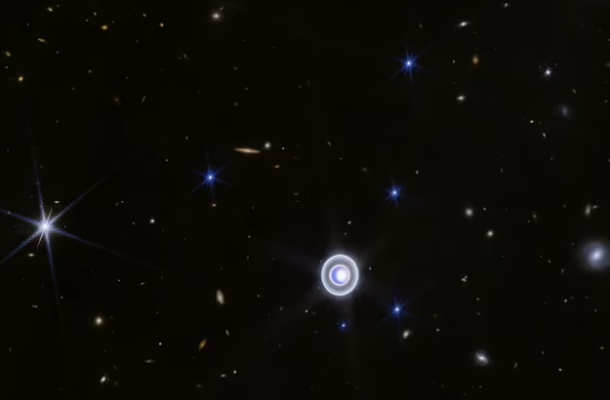Explore the mesmerizing images of Uranus captured by NASA's James Webb Space Telescope, showcasing the icy giant's rings, moons, and storms. Delve into the intricate details revealed by the telescope's infrared imaging capabilities and the profound impact on our understanding of Uranus' atmosphere.
Introduction: In a cosmic revelation, NASA's James Webb Space Telescope has bestowed humanity with breathtaking glimpses of Uranus, the enigmatic ice giant positioned over 1.6 billion km away. Unveiling the celestial canvas in unprecedented detail, the telescope's infrared imaging prowess paints a vivid portrait of Uranus, showcasing its intricate rings, moons, and atmospheric phenomena. This article embarks on a celestial journey, exploring the stunning visuals captured by the Webb Telescope and the profound insights they offer into the mysteries of Uranus.
A Symphony of Rings, Moons, and Storms
Exquisite Detail Revealed: Rings, Moons, and the Elusive Zeta Ring: The James Webb Space Telescope, a marvel of astronomical technology, has delivered an exquisite view of Uranus, unraveling the cosmic tapestry that adorns the icy giant. The infrared imagery captures the ethereal beauty of Uranus's faint inner and outer rings, showcasing the elusive Zeta ring, a celestial gem hitherto concealed. Beyond the rings, the telescope unveils a mesmerizing dance of 27 known moons, some gracefully pirouetting within the celestial rings.
Atmospheric Marvels and Unusual Tilt
Unique Polar Cloud Cap and Bright Storms: Uranus, known for its peculiar axial tilt, experiences extreme seasons, with a 21-year winter plunging regions into prolonged darkness. The James Webb Space Telescope's infrared gaze unravels the mysteries of Uranus's atmosphere, revealing a seasonal north polar cloud cap that adds a touch of uniqueness to this distant ice giant. The telescope also captures the luminosity of bright storms near and below the southern limit of the polar cap, showcasing the dynamic and ever-changing nature of Uranus's atmospheric ballet.Infrared Insights and Atmospheric Dynamics
Crucial Role in Uncovering Uranus's Secrets: The sensitivity of the James Webb Space Telescope to infrared wavelengths emerges as a scientific boon, enabling astronomers to delve into the atmospheric dynamics of Uranus. The telescope's infrared images become a canvas for studying the appearance and disappearance of the polar cap with seasonal changes. In particular, the capability to observe bright storms near the polar cap opens avenues for unraveling the intricate interplay of seasonal and meteorological influences—a cosmic puzzle waiting to be solved.A Prelude to Future Explorations
Contributing to Solar System Exploration and Exoplanet Understanding: Beyond the awe-inspiring revelations about Uranus, the observations captured by the James Webb Space Telescope play a pivotal role in shaping future explorations. Insights gleaned from these celestial portraits will inform and guide upcoming missions to the ice giant, offering a roadmap for in-depth investigations. Furthermore, the broader context provided by the observations contributes to our understanding of similarly sized exoplanets, enriching the tapestry of solar system exploration.Conclusion: A Cosmic Overture Unveiled
The celestial symphony orchestrated by NASA's James Webb Space Telescope unfolds a mesmerizing overture of Uranus, showcasing its rings, moons, and atmospheric wonders. This cosmic revelation not only enriches our understanding of Uranus but also sets the stage for future explorations and fuels our curiosity about the celestial wonders that lie beyond. As the Webb Telescope continues its cosmic odyssey, humanity awaits the next act in the unfolding drama of the universe.


Comments